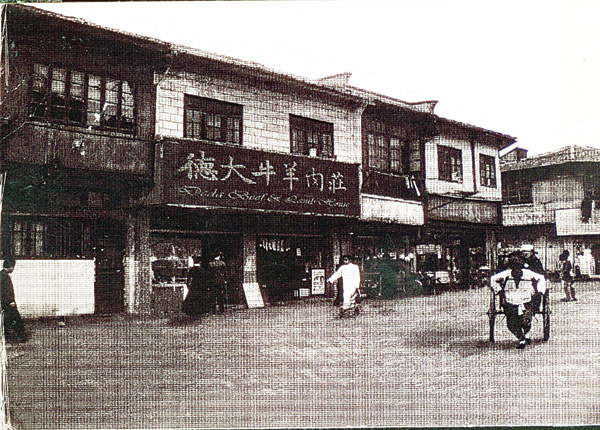Western food, Shanghai style
 |
|
[Photo provided to Shanghai Star] |
Deda was so popular that it even provided a delivery service for foreign ships. Deda’s business expanded quickly, and opened a second branch at the junction of East Nanjing Road and Middle Sichuan Road in July 1946. The new restaurant could accommodate 140 diners on the second floor, but was still short of seats during peak hours. Chiang Kai-shek’s sons Chiang Wei-Kuo, Chiang Ching-kuo, movie star Qin Yi and reporter Lin Fang were all VIP customers.
The business started to struggle after restaurant owner Chen Guobao, the second son of Chen An-sheng, ran away in 1949. Employees struggled to maintain the business and added sukiyaki (Japanese style hotpot) at the Nanjing Road store. They also opened a coffee department in 1952.
From 1952, business at the original Hongkou Deda went from bad to worse. It was finally forced to close down, as the whole country suffered a nation-wide "cultural revolution" (1966-1976). During this time, everything Western was considered politically wrong and was banned in New China.
The Nanjing Road Deda, which also struggled to make ends meet, added several innovative products, such as tonics and lunch boxes for tourists, and Suzhou and Wuxi-style cuisine in 1954. In 1963, the restaurant suspended its sale of Western food and went through several incarnations, being used as a snack store selling noodles, buns and beef soup, a medicine packaging factory, a paper-bag producing workshop, a hotel, a dim sum restaurant and a hotel.
It was not until February 1973 that Deda returned to its former incarnation as a Western restaurant.
Between 1986 and 1987, the store turned the ground floor into a café and the second floor was divided into special rooms with candlelight and a fireplace, which served Western cuisine and snacks to a wide range of customers. During its peak in the 1980s and 1990s, Deda served more than 8,000 international tourists from more than 80 nations and regions every year. Deda moved to West Nanjing Road in 2008, setting itself up in a traditional Shanghai-style villa.
















